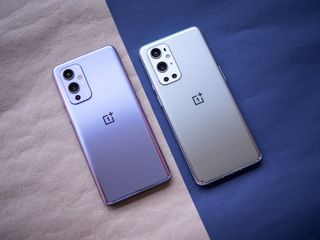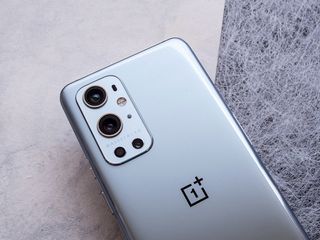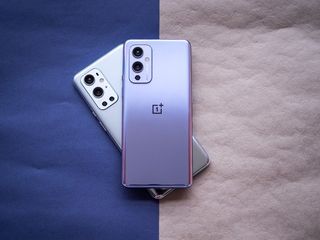Five things OnePlus needs to do better in 2022

OnePlus had an interesting year; it publicly acknowledged its OPPO roots while announcing that it would become a sub-brand of the BBK-owned entity — all in a bid to deliver faster updates — and rolled out a lot of devices this year. While that would normally be limited to high-end phones, OnePlus now caters to the entry-level and budget segments in addition to flagships like the OnePlus 9 series.
The Nord series has allowed OnePlus to post massive gains in sales figures, but it came at the cost of alienating its userbase. To compound matters further, OnePlus's foray into wearables hasn't gone to plan, and its efforts with TVs have languished in recent months. Here are a few things that OnePlus needs to fix next year.
Figure out its identity

As we head into 2022, I have no idea what OnePlus stands for. Until two years ago, it was the go-to company if you wanted a value flagship that offered the same caliber of specs for hundreds of dollars less than its rivals, with a focus on clean software that's devoid of any bloat.
OnePlus needs to show how its phones are different to what OPPO is offering in 2022.
But as we head into 2022, that is not the case. With the Nord series, OnePlus now fields several devices in the entry-level and mid-range categories, and with that comes increased pressure in terms of rolling out timely software updates. To that effect, OnePlus is using ColorOS as the default software on its phones going forward.
OxygenOS 12 is essentially just ColorOS 12 with a different name, and while the company revealed that it is working on a unified OS, my internal sources indicate that it is just a marketing exercise, with the core of the UI relatively unchanged from ColorOS.
OxygenOS was the main reason why a majority of users switched to OnePlus phones in the first place, and without that, I don't see how its devices would be any different to what OPPO is offering. OnePlus has to do a convincing job with the OnePlus 10 series and show that it is materially different to the Find X5 for it to stand out.
Deliver cameras that can hold up to Pixels and Galaxy flagships

After rolling out phones with lackluster cameras for years, OnePlus partnered with German giant Hasselblad to fine-tune the cameras of its flagships. As a result, the OnePlus 9 and 9 Pro fared much better in this area versus their predecessors, but they're still not quite on par with the best Android phones. For my money, the Mi 11 Ultra does a much better job in most situations.
Be an expert in 5 minutes
Get the latest news from Android Central, your trusted companion in the world of Android
The OnePlus 10 needs to hold its own against the Pixel 6 and the upcoming Xiaomi 12 and Galaxy S22.
For 2022, I want to see the OnePlus 10 series hold its own against the best that Google, Xiaomi, and Samsung have to offer. It shouldn't be as difficult as before; after all, OnePlus now has Hasselblad to figure out the color science and tune the hardware sensors, and with ColorOS as the software foundation, it gets to use OPPO's imaging algorithms and camera software, which in my view is miles ahead of OnePlus's own efforts.
But whether OnePlus can actually deliver in this area remains to be seen. With Xiaomi set to team up with Leica over the Xiaomi 12 series and Samsung slated to offer big gains with the Galaxy S22, the OnePlus 10 series has to come up with something truly extraordinary in this particular area.
Overhaul its wearable strategy

It's safe to say that of all the wearables I used in 2021, the OnePlus Watch was the worst of the lot. OnePlus's enthusiast fans were asking for wearables for several years, and the company introduced a budget fitness band dubbed the OnePlus Band that didn't move the needle against the Mi Band 5, and then there came the OnePlus Watch, which was just horrible at even the basics.
OnePlus needs to do the opposite of what it did in 2021 to succeed in the wearable segment.
For starters, it failed at delivering useful notifications, and wasn't accurate at counting activity or heart rate monitoring. It lacked any meaningful integration with the services you actually use day-to-day, and there wasn't even an always-on mode. The fact that it was based on a custom RTOS interface meant that it was severely limited in its feature-set, and when seen against the likes of Amazfit and Mobvoi's offerings, the OnePlus Watch fell short — even the limited edition Harry Potter model didn't do much to swing the needle for OnePlus.
For 2022, OnePlus definitely needs to sort out its wearable strategy. To its credit, it added Spotify integration, but it isn't straightforward to set up, and clunky to say the least. Activity monitoring has been fine-tuned as well, and there's now an always-on mode. But on the whole, the software needs to be overhauled if OnePlus wants to take on the likes of Amazfit, much less go after the best Android smartwatches, including the likes of the TicWatch Pro 3 and the Galaxy Watch 4.
Find a way to regain its enthusiast userbase

I don't know of any other phone manufacturer that has as big an enthusiast following as OnePlus. The Chinese manufacturer's focus on clean software combined with high-end hardware and value made it the obvious choice for power users — myself included — and over the years, it has relied on this community to make inroads in countries like India.
OnePlus's entire business was built on catering to enthusiast users, but that's not the case now.
But that's no longer the case. OnePlus is clearly going after a mainstream userbase as it targets sales figures, and that includes a radical shift in strategy that now sees most of its focus on the Nord series.
While that's not a bad thing — the Nord 2 is after all one of the best mid-range phones around — OnePlus lost a lot of goodwill in its quest to amass more users. First up is the issue of updates; I have counted at least four instances this year where OnePlus bungled a software update so badly that it had to pause an OTA while it fixed issues or issue another update to solve the problems that the first update caused.
OnePlus just doesn't have the engineering resources to update so many phones at once, and that's the main reason why it had so many issues with OTA updates this year. Combine that with a vocal userbase, and it's easy to figure out why there has been so much negativity in this area.
All phone manufacturers make mistakes — we don't have to look any further than the sheer number of Pixel 6 bugs to see that — but what's particularly annoying about OnePlus is its cavalier attitude to fixing these bugs.
The stable OxygenOS 11 update rolled out to the OnePlus 6/6T two months ago, and it introduced a slew of issues, with one bug preventing WhatsApp media from downloading onto the device. It took over a month and a half to fix the issue, and in the interim, OnePlus didn't do anything to inform its users that a fix was on the way.
For 2022, OnePlus needs to find a way to reconnect with its enthusiast users, because even if they're in the minority as far as sales figures go, they tend to be very vocal — particularly when something goes wrong with their device.
Clarify what it wants to do with TVs

When OnePlus unveiled the Q1 series — making its foray in the TV category — two years ago, I was very excited. The TVs offered a high-quality QLED panel, had a differentiated design, and ran Android TV out of the box. Sure, there were initial issues with the software and I wasn't keen on the design of the Q1 Pro, but as a first effort, it got a lot right.
OnePlus said at the time that the TV was the center of its smart home ambitions, and the Chinese manufacturer followed up the high-end Q1 and Q1 Pro with the mid-tier U series, and that was a good showing as well.
OnePlus was ambitious with its first TVs, but it looks like the company doesn't care about this category now.
But in the last 18 months, the only new launches in this series have been in the entry-level and budget-focused Y series, with a new model in the U series. Like its phone strategy, OnePlus seems to have shifted focus to the budget segment to eke out more sales, but even there, the company hasn't shown nearly as much interest as its rivals.
To me, it feels like OnePlus has lost interest in the TV segment and doesn't want to roll out new models — particularly in the high-end category. By contrast, Xiaomi has doubled down in this area, rolling out exciting options like the Mi TV 75 QLED, and the brand is going a great job launching its TV portfolio in western markets.
OnePlus, meanwhile, still sells its TVs only in India, and judging by the sales figures, it is decidedly lagging behind Xiaomi, Samsung, Vu, and other players in the market. So for 2022, it needs to lay out a plan for this category, and decide if it just wants to be a budget TV manufacturer or actually go up against the likes of Xiaomi in the high-end segment.
OnePlus needs to change a lot in 2022

2022 will be a defining year for OnePlus. The OnePlus 10 series will give us a good look at how OnePlus plans to function under OPPO's stewardship, and whether it is able to differentiate its phones going forward. The software situation will be divisive — particularly once older OnePlus phones make the switch to Android 12 — but OnePlus has already shown that it doesn't care about its vocal enthusiast userbase, instead focusing on the mainstream with its budget Nord series.
The way I see it, OnePlus will launch flagships in 2022 and beyond to maintain its cachet, but its main area of focus will be the Nord series. OnePlus achieved 10 million phone sales for the first time in 2021, and that's entirely down to budget Nord devices — particularly the Nord N series that's sold in North America — and it will want to continue that momentum going into 2022.
As for wearables, OnePlus really needs a fundamental rethink of what it wants to do in this category. OnePlus was mulling a collaboration with Google over a smartwatch running Wear OS, but instead decided to go with RTOS to deliver multi-day battery life. With that effort not passing muster, OnePlus may want to rethink Wear OS as an option for its 2022 smartwatches.
In short, there are a lot of things that OnePlus needs to sort out in 2022, but we'll have to wait and see if it manages to do so.

Harish Jonnalagadda is a Senior Editor overseeing Asia at Android Central. He leads the site's coverage of Chinese phone brands, contributing to reviews, features, and buying guides. He also writes about storage servers, audio products, and the semiconductor industry. Contact him on Twitter at @chunkynerd.
